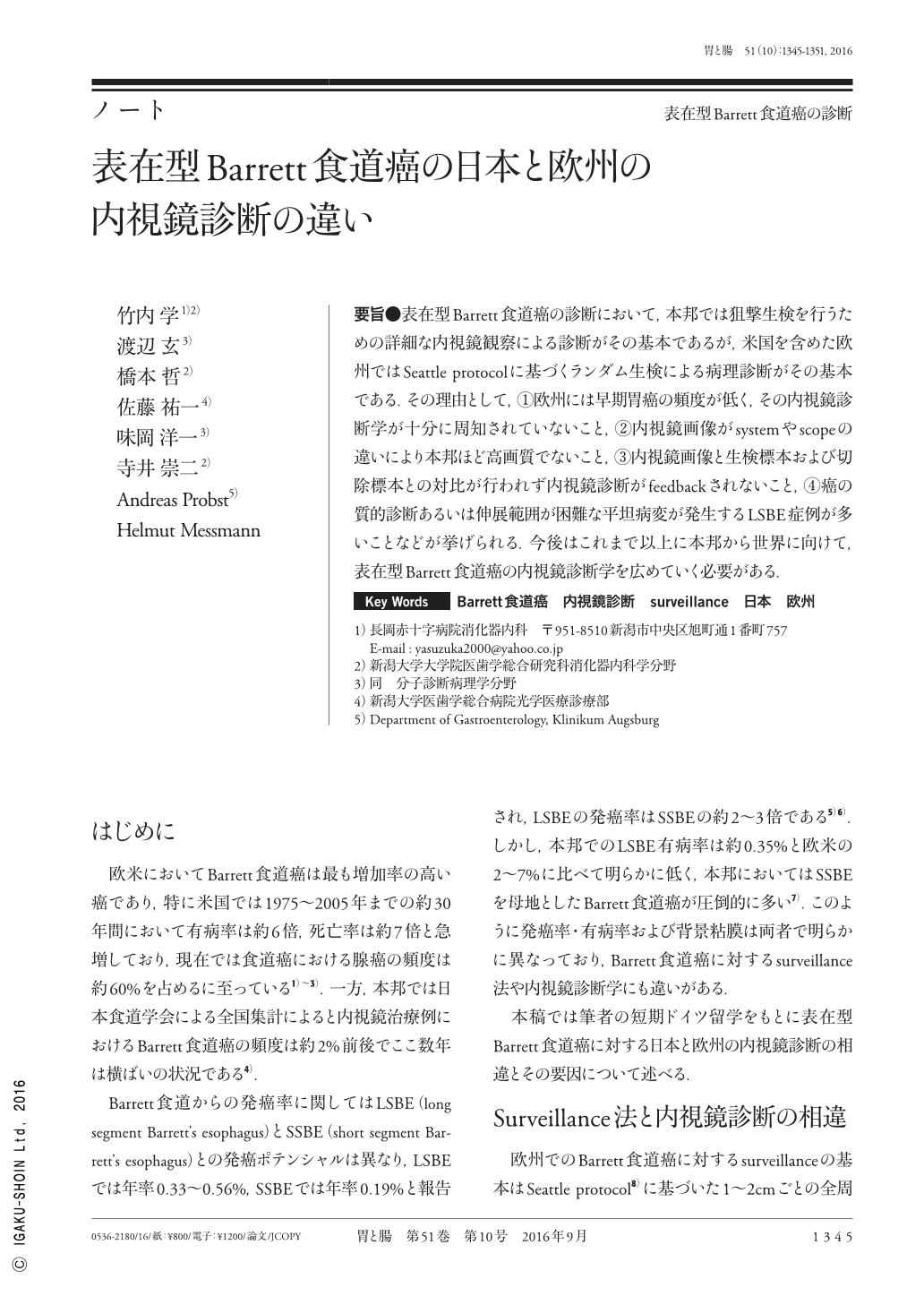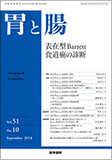Japanese
English
- 有料閲覧
- Abstract 文献概要
- 1ページ目 Look Inside
- 参考文献 Reference
要旨●表在型Barrett食道癌の診断において,本邦では狙撃生検を行うための詳細な内視鏡観察による診断がその基本であるが,米国を含めた欧州ではSeattle protocolに基づくランダム生検による病理診断がその基本である.その理由として,①欧州には早期胃癌の頻度が低く,その内視鏡診断学が十分に周知されていないこと,②内視鏡画像がsystemやscopeの違いにより本邦ほど高画質でないこと,③内視鏡画像と生検標本および切除標本との対比が行われず内視鏡診断がfeedbackされないこと,④癌の質的診断あるいは伸展範囲が困難な平坦病変が発生するLSBE症例が多いことなどが挙げられる.今後はこれまで以上に本邦から世界に向けて,表在型Barrett食道癌の内視鏡診断学を広めていく必要がある.
In Japan, a diagnosis of superficial BEA(Barrett's esophageal adenocarcinoma)is typically made using a detailed endoscopic analysis, which is proceeded by a targeted biopsy of the lesion. In contrast, in Europe and the United States, BEA is diagnosed using a random biopsy as defined in the Seattle protocol. The reasons these different approaches are used include the following:1)Europe has a low frequency of early gastric cancer, and endoscopic screening for gastric cancer is not routinely performed ; 2)Endoscopic images in Europe are of a lower resolution compared with those obtained using the endoscopic systems employed in Japan, 3)As endoscopic images of biopsy specimens and the resected specimens are not obtained, there does not appear to be a need to improve endoscopic diagnostics ; 4)In Europe, there is a higher rate of cases of LSBE(long-segment Barrett's esophagus), in which the lesion is flat, exhibits lateral extensions, and is difficult to qualitatively diagnose.
Expanding the use of a diagnostic approach that incorporates endoscopy and targeted biopsy in regions outside of Japan is necessary to provide improvements in the diagnosis of superficial BEA.

Copyright © 2016, Igaku-Shoin Ltd. All rights reserved.


